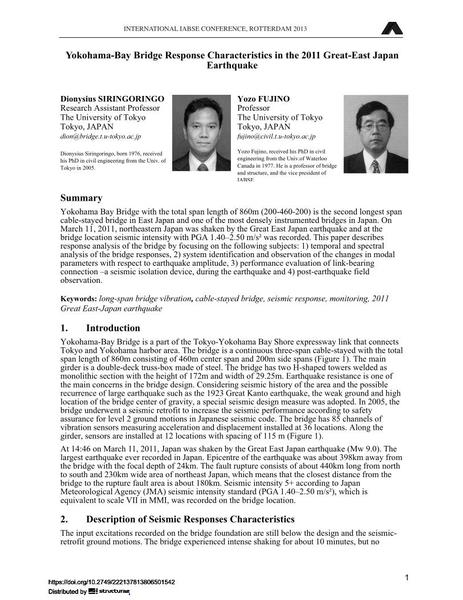Yokohama-Bay Bridge Response Characteristics in the 2011 Great-East Japan Earthquake

|
|
|||||||||||
Bibliographic Details
| Author(s): |
Dionysius Siringoringo
Yozo Fujino |
||||
|---|---|---|---|---|---|
| Medium: | conference paper | ||||
| Language(s): | English | ||||
| Conference: | IABSE Conference: Assessment, Upgrading and Refurbishment of Infrastructures, Rotterdam, The Netherlands, 6-8 May 2013 | ||||
| Published in: | IABSE Conference, Rotterdam, May 2013 | ||||
|
|||||
| Page(s): | 338-339 | ||||
| Total no. of pages: | 8 | ||||
| Year: | 2013 | ||||
| DOI: | 10.2749/222137813806501542 | ||||
| Abstract: |
Yokohama Bay Bridge with the total span length of 860m (200-460-200) is the second longest span cable-stayed bridge in East Japan and one of the most densely instrumented bridges in Japan. On March 11, 2011, northeastern Japan was shaken by the Great East Japan earthquake and at the bridge location seismic intensity with PGA 1.40–2.50 m/s² was recorded. This paper describes response analysis of the bridge by focusing on the following subjects: 1) temporal and spectral analysis of the bridge responses, 2) system identification and observation of the changes in modal parameters with respect to earthquake amplitude, 3) performance evaluation of link-bearing connection –a seismic isolation device, during the earthquake and 4) post-earthquake field observation. |
||||
| Keywords: |
cable-stayed bridge seismic response monitoring long-span bridge vibration
|
||||
